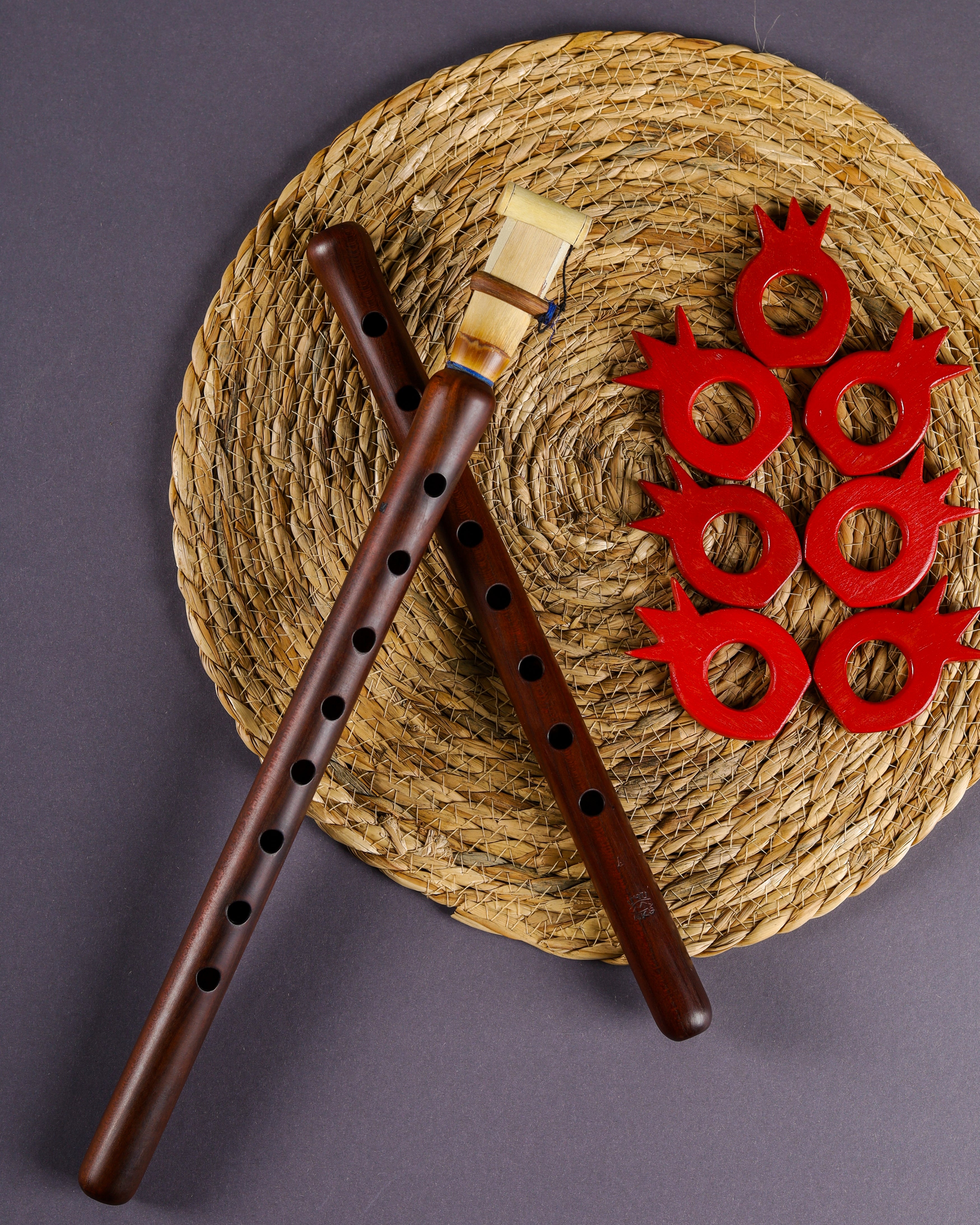Over the past decades, the Duduk has evolved to adapt to the demands of musicians and contemporary composers. Although considered an unalterable instrument, craftsmen have modified its size, adding key mechanisms, altering the mouthpiece, and many other adaptations. This evolution has allowed for greater accessibility of the instrument, as well as a wider range of sounds and possibilities for the musicians and composers who play with it.
Duduks in Different Keys
Amongst other evolutions, we can mention the Duduks in different keys, designed to meet the needs of musicians and composers, thus facilitating the integration and use of the Duduk in orchestras.
Having Duduks in different keys, means that the instrument can create various soundscapes. A higher-pitched Duduk might be used to infuse a joyful and energetic atmosphere, while a lower-pitched Duduk could enhance the gravity and solemnity of a musical composition.
Ultimately, the variety of available keys allows musicians to express themselves more fully and explore a wide range of musical styles with the Duduk.
Today, one can find Duduks in all keys, the most common are in Fa (F), Sol (G), La (A), Si (H), Si b (Bb), Do (C), and Re (D).
The Duduks in Fa (F) and Sol (G) allow for very low tones for love and/or melancholic songs. Duduks in La (A), Si (H), and Si b (Bb) are used to play the most authentic folk pieces in the original sound and style of the Duduk. The higher-pitched Duduks in Do (C) and Re (D), which are sharper, are suited for playing dance pieces during shows, concerts, weddings, or other events.
Here is a table of the characteristics of different Duduks

The Duduk with keying system

© http://www.minasovduduk.com/
The traditional Duduk, which has ten holes, has a range of an octave and a half (i.e., 10 diatonic notes). However, in the 1990s, the Armenian Duduk virtuoso, Georgi Minasov, introduced a keyed version of this instrument, thereby extending its range from 10 to 15 diatonic notes, covering a span of two octaves. This innovation offered composers greater freedom in exploring the expressive possibilities of the instrument.
Find more information on the official website of Georgi Minasov
The keyed Duduk played by Georgi Minasov Jr.
The Duduk Bass
Among the variations of the original Duduk is also the Bass Duduk. Manufactured using the same methods as the classic Duduk, it is distinguished by its core length exceeding 70 cm and the inclination of its mouthpiece, allowing more comfort for the musician playing the instrument.
Its use is crucial in ensembles of trios or quartets of Duduks, where it plays low frequencies by producing remarkable depth. Although it can be used as a solo instrument, this remains within an experimental range.
Given its length, the Bass Duduk is made in detachable parts that assemble before playing.
The Bass Duduk playing by Norayr Kartashyan


